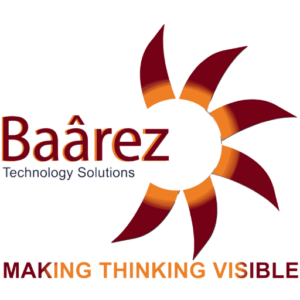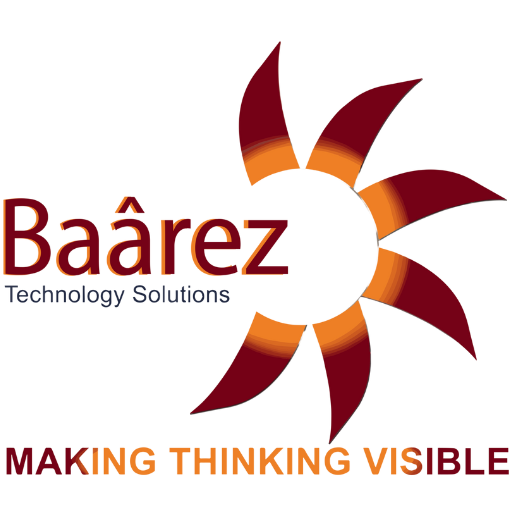
In today’s interconnected business landscape, organizations rely heavily on a vast network of third-party vendors and suppliers. This dependence, while crucial for efficiency and growth, introduces significant risk. Data breaches, financial instability, operational disruptions – any of these issues within a third-party ecosystem can have a domino effect, impacting your reputation, finances, and even legal standing.
This is where Third-Party Risk Management (TPRM) comes in. TPRM is a comprehensive approach to identifying, assessing, mitigating, and monitoring risks associated with third parties. Traditionally, TPRM has been a manual and time-consuming process, often hindered by:
- Limited visibility: Difficulty in obtaining a complete picture of all third-party relationships and their inherent risks.
- Data overload: Manually sifting through vast amounts of questionnaires, reports, and other data points.
- Human error: Inconsistency and subjectivity in risk assessments.
- Slow response times: Delays in identifying and addressing emerging threats.
This is where Artificial Intelligence (AI) steps in as a game-changer. AI-powered TPRM (AI TPRM) solutions are revolutionizing the way organizations manage third-party risk.
Table of Contents
ToggleThe Rise of AI TPRM Solutions
AI, with its ability to analyze vast amounts of data, automate tasks, and identify hidden patterns, is perfectly suited to address the challenges of traditional TPRM. The global AI TPRM market is projected to reach a staggering USD 4.2 billion by 2027, reflecting the growing adoption of this transformative technology.
How AI Enhances TPRM
AI TPRM solutions leverage a range of technologies to empower organizations with a more efficient, effective, and data-driven approach to third-party risk management. Here’s a closer look:
- Machine Learning (ML): ML algorithms analyze historical data on past incidents, regulatory changes, and industry trends to predict potential risks associated with specific vendors or types of vendors. This enables proactive risk identification and mitigation strategies.
- Natural Language Processing (NLP): NLP helps extract key information from vendor contracts, financial statements, news articles, and social media data. This automated process streamlines data collection and analysis, providing a more comprehensive view of a third-party’s risk profile.
- Network Analytics: Network analytics tools map and analyze the interconnectedness of your third-party network. This allows you to identify potential “single points of failure” and assess the cascading impact of a risk event within your ecosystem.
- Automated Workflows: AI can automate repetitive tasks such as sending risk assessments, collecting data from vendors, and generating reports. This frees up valuable time for risk management teams to focus on strategic initiatives and high-risk vendors.
- Continuous Monitoring: AI-powered platforms can continuously monitor third-party activities and external data sources for red flags and emerging threats. This enables real-time risk identification and faster incident response times.
Benefits of AI TPRM Solutions
By implementing AI TPRM solutions, organizations can reap a multitude of benefits:
- Improved Risk Identification: AI’s ability to analyze vast datasets and identify patterns leads to a more comprehensive understanding of potential risks associated with third parties.
- Enhanced Efficiency: Automating manual tasks and streamlining data collection allows risk management teams to work more efficiently.
- Reduced Costs: Improved risk identification and mitigation can lead to fewer incidents and lower overall risk management costs.
- Stronger Vendor Relationships: Streamlined onboarding processes and proactive risk communication can foster stronger and more collaborative relationships with vendors.
- Improved Regulatory Compliance: AI TPRM solutions can help organizations stay ahead of evolving regulations and ensure compliance with industry standards.
Use Cases of AI TPRM Solutions
Let’s delve into some real-world scenarios where AI TPRM solutions can make a significant impact:
- Scenario 1: Financial Services Industry A financial institution leverages AI to analyze a potential vendor’s financial health and identify potential risks associated with a cyberattack or financial fraud.
- Scenario 2: Supply Chain Management A manufacturing company utilizes AI for continuous risk monitoring of its global supply chain. The AI system flags a supplier in a politically unstable region, prompting the company to investigate and develop contingency plans.
- Scenario 3: Healthcare Industry A healthcare organization uses AI to assess the data security practices of a healthcare technology vendor. The AI identifies potential vulnerabilities and prompts the organization to take corrective action before a data breach occurs.
Choosing the Right AI TPRM Solution
Here are some key factors to consider when selecting an AI TPRM solution:
- Vendor Reputation: Choose a reputable vendor with a proven track record and a strong understanding of your industry’s specific risk landscape.
- Functionality: Ensure the solution offers the functionalities you need, such as risk assessment automation, data integration capabilities, and continuous monitoring features.
- Scalability: Consider your organization’s size and future growth plans. The solution should be scalable to accommodate your evolving needs.
- Ease of Use: An intuitive user interface and a user-friendly platform are essential for ensuring smooth adoption within your organization.
- Data Security: The solution should prioritize data security with robust encryption protocols and access controls to protect sensitive information.
- Integration Capabilities: Ensure the solution integrates seamlessly with your existing risk management and enterprise resource planning (ERP) systems.
- Implementation and Support: Choose a vendor that offers comprehensive implementation and ongoing support services to ensure a smooth transition and maximize the value of your investment.
The Future of AI TPRM
As AI technology continues to evolve, AI TPRM solutions are poised to become even more sophisticated and impactful. Here are some exciting trends to watch for:
- Advanced Analytics: AI will leverage advanced analytics techniques like deep learning to generate even more predictive insights into third-party risk.
- Cognitive Automation: AI will move beyond automating tasks to cognitive automation, mimicking human decision-making capabilities in risk assessments.
- Integration with Blockchain: Integration with blockchain technology will enable secure and immutable data sharing within third-party ecosystems, further enhancing risk transparency.
Conclusion
In today’s complex business environment, managing third-party risk is no longer optional. AI TPRM solutions offer a powerful and efficient way to identify, assess, mitigate, and monitor risks associated with your third-party network. By leveraging the intelligent capabilities of AI, organizations can build a more resilient and secure business ecosystem, fostering stronger vendor relationships and driving sustainable growth.


